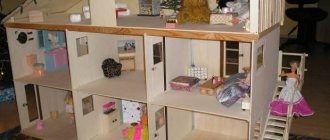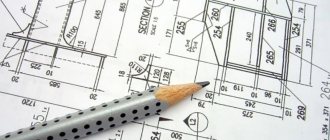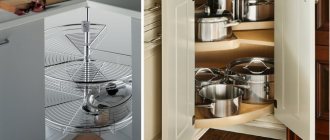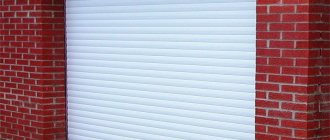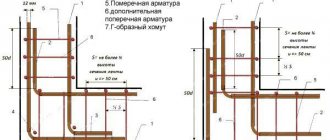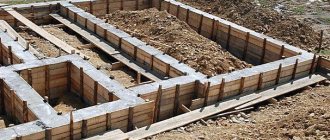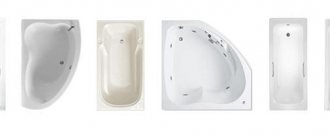Contents of the belt grinder kit Host for self-assembly
| List of the main set of working drawings for the MG-915 belt grinder OWNER. | ||
| Sheet | Name | Note |
| 1. | Common data. | |
| 2. | Belt grinder frame. | |
| 3. | Support mechanism. Retractable crossbar. The table plate is retractable for the belt grinder. | |
| 4. | Support table. Thrust plate, belt grinder ears | |
| 5. | Belt grinder drive pulley. | |
| 6. | Straight belt grinder roller 2 pcs. | |
| 7. | Roller barrel of a belt grinder. | |
| 8. | Rolling bushing for belt grinder. | |
| 9. | Threaded axle of belt grinder 4 pcs. | |
| 10. | Assembly view 1. | |
| 11. | Assembly view 2. | |
| 12. | Assembly view 3. | |
The main elements of the belt grinder (retractable crossbar, main frame and rotary mechanism) are cut from metal 10 mm thick. We recommend assembling the material of the frame and main elements of the grinder from metal with a thickness of 10-12mm; to make the structure lighter, aluminum of a similar thickness is also suitable. For this, we recommend using laser or waterjet cutting; a plasma cutter or milling machine is also suitable.
???? Do-it-yourself grinder: drawings with dimensions and diagrams
The grinder is an indispensable tool in the workshop. It allows you to grind products made of wood, plastic, metal, and also process any surfaces.
The choice of material depends on the choice of belt - a hard abrasive allows you to process denser products.
In this article by the Homius editors, we will look at how to make a grinder with your own hands using ready-made drawings with dimensions, and consider options for assembling flexible manual machines for surface treatment.
A hand grinder allows, for example, to grind welding seams in hard-to-reach places
What is a grinder and what is it intended for?
The grinder, unlike the usual stationary machine, is a more versatile tool. It allows you to grind parts at an angle and is a tool for finishing, for example, as sanding elements of wooden furniture. A grinder can easily remove rust from the surface and sharpen a knife.
Belt tension mechanisms and a rotating working platform allow you to arbitrarily change the sharpening angle
Schematic diagram of the grinder design and the principle of its operation
In order to correctly understand the structure and operating principle of the grinder, let us turn to its structure. The main task is to find a powerful motor that will need to be equipped with a drive.
Important! The torque is transmitted to the rollers, which drive the abrasive belt.
Grinder appearance
So, the main elements of the grinder, in addition to the engine, are:
- Straight roller with pulley.
- Tension rollers.
- Abrasive tape.
- Base.
- A device that fixes the tension of the belt and rollers.
- Table for fixing the part (in some models it can be rotary).
After connecting the device to the network, the rollers set the abrasive belt in motion. Moreover, the position of the rollers can be shifted to control the tension of the abrasive belt.
In some cases the table can be rotated 180°
When assembling the grinder yourself, it is important to position the rollers strictly perpendicular to each other to avoid distortions of the belt, which can lead to its breaks.
Advice! Before deciding on the size of the belt and the width of the rollers, figure out what surfaces you plan to process, their dimensions and volume of work.
The speed and quality of product processing depends on the choice of tape. Most often, the following belt sizes are used in machines of this type: 610, 915, 1230, 1600, 1830 mm in length; in width there are only two options - 50 and 100 mm. The bottom fabric should be elastic.
Fabric base withstands surface tension better
Grinder “from Chapai” - a brief overview
Andrey Chapai developed his own version of the grinder. The model was so loved by the craftsmen that its name soon became a household name. The craftsman even developed a whole line of devices, which today are scattered throughout workshops all over the world.
Grinder “from Chapai” is a universal machine with a rotating pressure table that allows you to process different surfaces
Drawing of a belt grinder frame
In the absence of access to this equipment and a certain experience and perseverance, using the basic dimensions in the drawings, you can assemble a belt grinder with your own hands using an angle grinder for cutting metal and a drill for drilling holes. The easiest way to transfer grinder drawings to blanks is to print them in 1:1 format and glue them.
Drawing of the crossbar and frame of the belt grinder
The material of the belt tensioner mechanism for the grinder is made of 8 mm thick steel. To assemble this unit, you will need M6x1 taps, holes with a diameter of 5.2 mm, in the drawing for a 6x1 thread. We recommend lubricating the rubbing elements with any available technical lubricant. For further stable operation of the grinder belt tensioner, it is recommended to lubricate it regularly.
Drawing of the belt grinder tensioner
The support table and thrust platform of the Host belt grinder are made of 6 mm thick steel using welding and subsequent grinding of the seams. You will also need an M8x1.2 tap; the holes for this thread are marked with a diameter of 6.8 mm. As a thrust element of the grinder, we recommend using porcelain tiles; they have proven themselves better than high-alloy steel or cast iron, because... its density and durability are higher.
Disc or tape? And drive
There are almost more types of grinding machines used in industry than lathes. The emery known to all craftsmen - a motor with a pair of grinding wheels (or one wheel) - is also a grinder. For yourself at home, it makes sense to make either a disk end grinder (plate grinder) or a belt grinder. In the first, the abrasive is applied to a rotating hard disk; in the second - on an elastic band running around a system of pulleys and rollers. The disc type is more suitable for grinding simple wooden parts and coarse or medium clean metal parts. Using a belt grinder, it is also possible to produce precise and clean finishing of profiled parts of complex shapes, incl. large-sized, see below.
A disk grinder is very easily obtained from the same emery or a motor of suitable power, see below. You need to order an adapter from the electric motor shaft to the shank of a metal-based grinding disc. Or under a clamping chuck, then on the same motor it will be possible to build a mini lathe, see figure:
Homemade disk grinder
A worn-out “plate” is suitable: a disk made of thin (4-6 mm) fibrous plastic is glued to the edge of its side, and an abrasive is placed on it. How to make an end grinder, see next. video clip.
Video: homemade end grinder
Note: a 100-200 W drive uses a mini belt grinder (see below) for precision knife dressing, grinding/polishing jewelry, etc.
A drill or screwdriver as a grinder drive is also convenient in that it allows you to quickly change the speed of movement of the abrasive (see below) using a standard speed controller. You just need, firstly, to make a holder for the drill that rigidly fixes the tool. Secondly, an elastic transition coupling from the drill to the disk shank, because It is difficult to achieve their precise alignment without special equipment, and runout will negate the accuracy of processing and can damage the drive tool.
Drawings of a drill holder for using it as a drive for a home metal-cutting machine are given on the left in the figure:
Drawings of a drill holder for driving a grinder (grinding machine)
Since shock and irregular alternating loads on the drive in a grinder are an order of magnitude lower than, say, in a lathe, the drill holder for it can be made of hard wood, plywood, chipboard, MDF, on the right in Fig. The diameter of the mounting (large) hole is along the neck of the drill. It is highly advisable to use a drill without an impact mechanism and with a steel shell on the neck (for installing the front handle).
coupling
For the adapter coupling, you will need a piece of steel rod (not necessarily turned) of the same diameter as the shank of the grinder drive shaft, and a piece of PVC-reinforced hose (garden irrigation) with a clearance such that it stretches tightly over the rod and shank. The length of the “free” hose (between the ends of the rod and the shank in it) is 3-5 cm. The length of the protruding part of the rod should be sufficient for reliable clamping in the drill chuck. After assembling the coupling in place, the hose on the shank and rod is tightened tightly with clamps; can be wired. Such a coupling completely counteracts the misalignment of the drive and driven shaft up to 1-1.5 mm.
Read also: Installing a satellite dish yourself, instructions for dummies
Drawing of a table for a belt grinder
It is best to entrust turning work to an experienced turner, because... The rollers and pulley of the belt grinder are high-precision parts, difficult to manufacture and require the use of turning equipment and various types of cutters, as well as a band saw for cutting workpieces. This is the main element of stable operation, smooth running of the grinder belt and safe operation of your machine. All dimensions and tolerances of grinder rollers are indicated in the following drawings.
Do-it-yourself grinder at home: video and instructions for assembling from an angle grinder
In terms of its purpose, a stationary grinder for home use resembles a device made from a drill. Devices based on an angle grinder or, as it is also called, an angle grinder, have their own characteristics. The main distinguishing feature of angle grinders is that their drive has a high rotation speed.
Thus, to make a grinder from an angle grinder, you may need a device that controls drive speed. Angle grinders are often used as electronic files.
For this purpose, there are special belt sanding attachments on sale, namely:
- narrow;
- long.
Grinder constructions are often used for grouting welding seams and sharpening small parts.
Such attachments are quite popular among craftsmen. With their help you can easily process various hard-to-reach places (for example, holes). It’s not difficult to make a grinder from an angle grinder with your own hands. To do this, you need to independently design an abrasive attachment, which is based on a tape of the required size. However, it is much easier to purchase a ready-made tool.
The main design difference between an angle grinder and other equipment operating from the mains is the location of the angle grinder’s output shaft. This element is deployed at right angles to the body. As a result, this design is very convenient and helps ensure easy fixation of the drive roller and abrasive cloth.
Thus, such a nozzle is not difficult to do with your own hands. A drawing of a grinder made from an angle grinder can be found on one of the specialized forums dedicated to this topic. This type of tool is quite comfortable to use. The elongated body of the nozzle facilitates various types of grinding work.
Grinders made from an angle grinder often appear in the everyday life of home craftsmen, because the grinder itself is already a mini-machine for grinding.
Making a simple grinder at home is not a difficult task if you approach the matter competently. Of course, you can design more functional equipment with your own hands, but such work requires more time, materials and effort. The choice of a suitable drawing must be made based on individual needs.
Do-it-yourself vibrating plate: (read more)
Drawing of the belt grinder tensioner bushing Owner
To assemble the grinder rollers, you will need 6000RS bearings, 6 pcs. In case of imprecise turning, I recommend gluing them onto thread sealant, this will allow them to last longer and avoid unpleasant situations with collapsed rollers. We use CNC turning on our machines, which allows us to produce parts with an accuracy of .01 millimeters.
For a better understanding of assembling a belt grinder with your own hands, below we attach assembly drawings and views of the assembled grinder.
Tape is still better
Belt grinder
makes it possible to do everything the same as a disk one, and much more.
Thanks to this, we will further concentrate on how to make a belt sanding machine
. Amateurs, looking at industrial designs, sometimes make very unusual grinders, see figure:
Homemade belt sanders
And this is justified: the design and kinematics of the belt grinder are very flexible, which makes it possible to successfully use available materials and outdated scrap metal. You just need to follow 3 principles:
- There is no need to do it as in the second photo from the left: the abrasive side of the tape should only touch the part being finished. Otherwise, the abrasive material will eat both the guide rollers and itself. The accuracy and cleanliness of processing during one work operation will be unpredictable;
- The design of the machine must guarantee the same tension of the belt, this does not depend on the nature of the operation performed;
- The speed of the belt must correspond to the nature of the operation being performed.
Kinematics and design
As mentioned above, there are a lot of grinder designs. Figuring out what and how to build a grinder
For yourself, it’s good to focus on industrial designs that are designed to be fully mechanized for precise and clean grinding of large profiled parts: once it “sands” the blade of an airplane propeller or wind turbine as needed, then it can handle any other work.
Kinematic schemes
Grinders for specified purposes are shown in the figure:
Key kinematic schemes
belt grinding machines (grinders)
Pos. A – very complex and absolute, with three rocker arms. If the length of the tension roller rocker arm is approx. several times less than the working one, then by adjusting the tension of the springs, it is possible to achieve the same tension of the tape when the working rocker moves 20-30 degrees down and up. The inclination of the bypass rocker, the very first thing, the machine
Can be adjusted to suit belts of different lengths.
Second, in the same way you can quickly change the belt tension for a wide variety of operations. The working branch of the belt can be any other than the one running from the drive pulley to the tension roller, i.e. A grinder
with 3 rocker arms is both horizontal and vertical.
The scheme with a coaxially swinging rocker arm (item 2) is lighter, more accessible and in terms of processing accuracy is in no way inferior to the previous one, if the length of the rocker arm between the axes is at least 3 diameters of the part to be finished. To reduce the profile by grinding, the stroke of the rocker arm is limited by stops within 10 degrees up and down. The pressure of the belt to the part is very often gravitational, under the weight of a rocker arm with a bypass pulley. The tension of the belt can be quickly changed within certain limits by pulling the rocker up with a weak adjustable spring, which partially compensates for its heaviness. Grinder
This
circuit
will work as
a grinder
for small parts from a sliding table.
In this case, the rocker arm is rigidly attached in a horizontal position, and the surface for the belt to work will be the one that runs around the bypass pulley. For example, the very common grinder
.
The disadvantages of the scheme
, first of all, the technologically difficult rocker arm joint that is coaxial with the drive shaft. Secondly, the need for an elastic band: if you make the idler pulley sliding and spring-loaded, the processing accuracy decreases. This drawback during processing of small parts is completely eliminated by an additional tension roller, see below.
The scheme with one misaligned rocker arm is rarely used in industry, because as a rule, it does not make it possible to achieve the same tension of the tape. However, it gives accuracy that is quite sufficient at home and makes it possible to build a very good primitive grinder
.
What's good for what?
Now let's see what can be squeezed out of this or that scheme
from the point of view of an amateur master. And then we’ll try to figure out how to make a grinder belt ourselves and do without custom-made turned parts.
3 rocker arms
Competent amateurs build their own grinders exactly according to the scheme with 3 rocker arms, on the left in Fig. below. Not all propeller blades can be ground, however, in this option there is another positive quality of this scheme
: if
the grinder
is used as a vertical grinder, then the working branch of the belt is elastic. This makes it possible for a skilled craftsman to, say, guide cutting edges and blades with almost micron precision.
Homemade and industrial-made tape grinders
In industrial grinders for home use, the 3-rocker design is also widely used (in the very center) for the same reason. Repeating them with your own hands is quite possible in many cases. For example, the drawings of the KMG grinder, which is widespread abroad, can be downloaded from the link.
The dimensions are, however, inch - the machine is American. For the drive, in any case, it is possible to use an angle drill-grinder (on the right side in the figure, quite suitable in terms of power) with a homemade pulley and rollers, see below.
Note: if you are making a stationary drive, try to purchase an asynchronous motor at 2-3 speeds from an unusable washing machine with a horizontal tank. Its advantage is low revs. This helps to make the drive pulley of a large diameter and thereby eliminate belt slippage. If the tape slips during operation, it is likely a damaged part. A large number of washing machines with 2-3 speed asynchronous motors for 220 V are Spanish. Shaft power – 600-1000 W. If you come across one like this, don’t forget about the standard phase-shifting capacitor bank.
Coaxial rocker
Amateurs do not make pure grinders with a coaxial rocker arm. A coaxial hinge is not a simple thing, you can’t make an elastic band yourself, and store-bought ones are expensive. Grinders with a coaxial rocker are very often used at home in the version for very small precision work from a table, i.e. with a rigidly fixed horizontal rocker arm. But then the need for a rocker arm as such disappears.
An example would be a mini grinder
, drawings of which are given in Fig.:
Drawings of a mini-grinder for very small precision work
Its specific features are, first of all, an overhead bed for the tape (item 7), which significantly expands the possibilities of application. For example, the plane iron is straightened on this grinder with an angular stop almost by itself. In this case the grinder
it works, so to speak, like a self-propelled whetstone (emery block).
Having removed the bed, we get a grinder
with an elastic band for precise grinding/polishing of rounded small parts.
Second, tension shaft (item 12). By clamping it to the groove with nuts, we obtain a relatively fixed tension of the tape for working with the bed. And after releasing the nuts, we switch the grinder
to the gravitational belt tension mode for fine work. Drive - not necessarily through a pulley (pos. 11). Can be screwed directly onto the drive shaft shank (item 16) from the drill through the adapter coupling, see above.
Special instrumental grinder
(for example, for guiding and straightening turning tools) generally loses any semblance of the original design.
A high-speed motor is used for it (200-300 W is enough power). The drive pulley, based on this, has a small diameter. The bypass pulley, on the contrary, is made much larger and heavier for inertia. Together, all this makes it possible to reduce tape runout. The tension roller for the same purpose, plus for greater uniformity of belt tension, is moved further and spring-loaded with a long, not very strong spring. How to perform a grinder
for processing incisors, see the video below.
Assembly drawings of a belt grinder
Assembly drawing of a belt grinder (View 1)
Assembly drawing of a belt grinder (view 3)
Assembly drawing of a belt grinder (view 2)
All the fasteners used for assembling the belt grinder with your own hands are laid out in the specification file.
Specification of fasteners for the drawing of the belt grinder
Thank you for reading this material, we are posting a link to the drawings of the “Host” tape grinder in vector format for printing in good quality as a separate file
Belt grinder drawings in dwg format with dimensions
Send us your suggestions, questions and wishes by email, we will be happy to discuss or help with any questions you may have.
Call, write!

